This document explores the critical role of silicon photomultipliers (SiPMs) and their diverse applications within the Life Sciences.
Introduction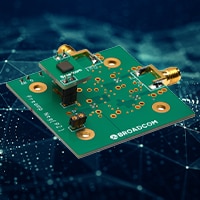
A silicon photomultiplier (SiPM) is a highly sensitive solid-state photodetector. It has a very high signal-to-noise ratio, enabling the detection of individual photons with excellent time resolution. Broadcom's SiPM technology offers several technical advantages, including high photon detection efficiency (PDE) of up to 63% at 420 nm, low noise characteristics, fast timing response, compact and scalable design, robustness and reliability, and improved image resolution and accuracy in PET scans. It excels in detecting low light levels, making it ideal for life sciences applications like flow cytometry, fluorescence detection, and positron emission tomography (PET).
Refresher on SiPMs
SiPMs are solid-state photodetectors composed of arrays of Single-Photon Avalanche Diodes (SPADs) operating in Geiger mode. When a SPAD is biased above its breakdown voltage, it becomes highly sensitive to light and can trigger an avalanche event from a single photon interaction. This mode of operation is known as Geiger mode. It enables the detection of extremely weak light signals, down to individual photons.
In a typical SiPM, several hundred to thousands of SPADs are connected in parallel (Figure 1). Each SPAD is equipped with an integrated series resistor that quenches the avalanche and resets the diode quickly, allowing it to be ready for the next photon. The combined output of these SPADs results in a current pulse proportional to the number of incident photons, producing a high-gain signal (>1 × 10⁶) with excellent time resolution.
Figure 1: A SPAD arrangement and SiPM signal formation with schematic
Source: Broadcom AFBR-S4XX Brief Introduction to Silicon Photomultipliers, Application Note)
SiPMs generate fast, quasi-digital pulses with sub-nanosecond rise times, making them ideal for time-critical applications such as LiDAR, TOF-PET, and fluorescence lifetime imaging. Their internal amplification mechanism ensures a high signal-to-noise ratio, and their design minimizes dark counts and afterpulsing, which is crucial for precise photon counting in low-light environments.
The typical SiPM design can be either p-on-n or n-on-p, depending on the target spectral sensitivity. Figure 2 shows the typical nomenclature and polarity for reverse biasing. The positive SiPM bias voltage is applied to the cathode; the SiPM signal is read out via the anode and fed into a transimpedance amplifier (TIA). The voltage signal can subsequently be further processed and digitized.

Figure 2: Common readout design comprising a transimpedance amplifier
(Source: Broadcom AFBR-S4XX Working with Broadcom SiPMs, Application Note)
The best way to read a SiPM depends on the application and signal requirements. It can be DC- or AC-coupled, and signal amplitudes can be increased or reduced using amplifiers or attenuators. A common readout design is a transimpedance amplifier (TIA), which can be realized using various operational amplifiers. The choice of amplifier depends on the end application's performance requirements. A single-stage transimpedance amplifier can be used for moderate gain or low bandwidth.
Broadcom offers two distinct families of SiPMs: Near Infrared (NIR) and Near Ultraviolet (NUV). The NIR SiPM family is designed for near-infrared applications, making it ideal for automotive and industrial LiDAR, ranging systems, and life sciences. It offers exceptional performance in parameters like PDE, crosstalk, afterpulsing, and recovery time. The NUV-MT SiPM technology enhances performance in applications like Time-of-Flight Positron Emission Tomography (TOF-PET), flow cytometry, radiation and X-ray detection, X-ray photon counting, and line-of-sight data communication, making it ideal for demanding applications.SiPM efficiency is expressed as PDE (photon detection efficiency), the parameter to compare to a PMT’s quantum efficiency (QE). With a PDE of 63% at 420 nm (NUV SiPM) and a PDE of 38% at 800 nm (NIR SiPM), Broadcom SiPMs achieve an efficiency superior to most available PMTs (Figure 3).
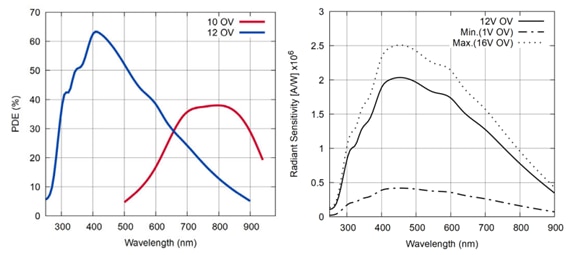
Figure3: SiPM PDE (Left for Broadcom NUV and NIR SiPMs) and Radiant Sensitivity (Right for NUV SiPMs)
(Source: Broadcom AFBR-S4 SiPMs in Life Sciences: Overcoming Limitations of PMTs, White Paper)
How SiPMs are used in the life sciences
SiPMs offer a superior performance over traditional photomultiplier tubes (PMTs) due to their robustness, compactness, and immunity to magnetic fields. PMTs are commonly used for detecting dim signals and in life sciences for applications such as flow cytometry, fluorescence detection, and molecular imaging. Their ability to reliably detect single photons enables accurate biological analysis and real-time diagnostic imaging, surpassing the limitations of traditional photomultiplier tubes.
- 1) Fluorescence detection
Fluorescence signals are often weak. High sensitivity, low excess noise, and high intrinsic gain result in excellent single-photon and low-light detection capabilities of SiPMs. - 2) (Spectral) Flow cytometry
With sensitivity ranging from the near ultraviolet to the near infrared and availability in various form factors, Broadcom offers the right SiPM technology for your flow cytometer. The full dynamic range of SiPMs can be accessed at a single voltage setting and independently of the gain. - 3) (TOF) Positron Emission Tomography
With peak sensitivity matching the emission spectrum of most used scintillators for TOF PET, and single photon time resolution below 50 ps, NUV-MT SiPMs set new records in coincidence resolving time (CRT).
Advantages of SiPMs over Photomultiplier Tubes (PMTs)
Beyond performance, SiPMs are robust, compact, and unaffected by magnetic fields, offering a distinct advantage over traditional PMTs. Until recently, the PMT, a vacuum tube device available since the 1940s, was the only choice for low-light-level/photon-counting applications. However, its vulnerability to ambient light, fragile and bulky housing, sensitivity to magnetic fields, and requirement for high voltage make this sensor difficult to use in many applications. When fast timing, high granularity and sensitivity, robustness, and compactness (for handhelds) are considered, the silicon photomultiplier offers significant advantages. See the following table for a detailed comparison.
|
Characteristic |
PMT |
SiPM |
System Implications |
|
Operating Voltage |
800V–2000V |
< 50V |
Safety, simpler design |
|
Efficiency (QE/PDE) |
Up to 40% |
Up to 65% |
Improved SNR |
|
Excess Noise Factor |
Medium |
Low |
Improved SNR |
|
Dynamic Range |
Limited by max. current |
Determined by the number of SPADs (and recharge) |
Operation at a single-gain setting with SiPMs |
|
Compact and Mechanical Robustness |
No |
Yes |
Compact design, many readout channels |
|
Long-term Stability |
Deteriorates over time |
Good |
Reduction in system recalibration |
|
High Granularity |
No |
Yes |
Compact design, many readout channels |
|
Uniformity |
Good |
Excellent |
Measurement accuracy, easy to calibrate |
Table 1: Key Advantages of SiPMs over PMTs in Life Sciences
The SiPM has increasingly replaced PMTs due to advantages such as higher sensitivity, good timing performance, the possibility to build arrays with high granularity, compactness and ruggedness, insensitivity to magnetic fields, and low bias voltage and power requirements.
SiPMs in life science applications
Life science applications involve using knowledge about living organisms and processes to improve human health, agriculture, and the environment. Research and diagnostics in the life sciences demand increasingly higher sensitivity, miniaturization, and integration into portable and digital systems. SiPMs meet these evolving needs with superior performance and reliability.
SiPMs are well-positioned to support bioimaging techniques such as fluorescence microscopy, flow cytometry, and microplate readers. These methods require detectors that capture faint signals from fluorescently labeled molecules, cells, or tissues, improving imaging resolution, speed, and working with lower sample concentrations. SiPMs offer the necessary sensitivity to improve imaging resolution, speed, and the ability to work with lower sample concentrations.
Key roles in life sciences
The high sensitivity of SiPMs makes them ideal for low-light-level applications like fluorescence and chemiluminescence-based assays. Their fast response time enables precise timing measurements in techniques like Fluorescence Lifetime Imaging Microscopy (FLIM) and Time-Correlated Single Photon Counting (TCSPC). Other advantages include:
- High gain: Delivers high internal gain, amplifying weak light signals to detectable levels.
- Compactness and ruggedness: Small, robust, and insensitive to magnetic fields, suitable for portable and integrated devices.
- Low Operating Voltage: Functions at low voltages, simplifying system design and reducing power consumption.
- Wide Spectral Range: Sensitive across wavelengths relevant to common fluorophores and bioluminescent reporters.
SiPM advantages over existing technologies
SiPMs are a leading photodetection technology in life sciences and industrial applications due to their superior sensitivity, speed, compactness, and robustness compared to traditional PMTs. Photodiodes are best for linear response needs in high-light environments. Still, they lack the gain and low-light sensitivity of SiPMs, which are optimized for applications like fluorescence detection or low-light imaging. While PMTs offer excellent sensitivity, they are fragile, consume high power, and are unsuitable for compact or portable systems. SiPMs provide equivalent or superior sensitivity, durability, and scalability, making them ideal for modern medical devices and portable diagnostic tools.
Advantages of SiPMs over PMTs
SiPMs show superior sensitivity up to the near infrared (NIR) region. The higher signal-to-noise ratio (SNR) is due to a lower excess noise factor (ENF). Other advantages include:
- Higher dynamic range at high count rates or quasi-DC illumination
- Single gain setting to accommodate full dynamic range
- Not damaged by bright light exposure
- No recovery time required after exposure to ambient light
Advantages of SiPMs over Photodiodes
SiPMs have an edge over photododes due to:
- Gain: Very high (>10⁶) via Geiger-mode operation
- Noise Susceptibility: High signal-to-noise due to internal gain
- Light Detection: Single-photon detection capability
- Signal Strength: Strong, fast electrical pulse output
Impact on end applications and improved performance by modern SiPM technology
Modern SiPMs offer key applications such as TOF-PET, flow cytometry, fluorescence detection, DNA sequencing, and X-ray photon counting. They provide high timing accuracy, better image resolution, improved signal fidelity, low background noise, and a compact design.
- The high gain and fast response of SiPMs improve the detection of low-intensity fluorescence signals from individual cells, leading to more accurate cell sorting and analysis, especially for rare cell populations or weakly expressing markers.
- Modern SiPMs with higher Photon Detection Efficiency (PDE) and lower noise (dark count rate, crosstalk, afterpulsing) allow for imaging of fainter signals, reducing laser power requirements and minimizing phototoxicity to live samples.
- SiPMs facilitate faster and more sensitive detection in automated microscopy platforms used for drug discovery.
- The insensitivity of SiPMs to magnetic fields allows for integration with MRI, enabling simultaneous functional and anatomical imaging.
- The excellent timing resolution of modern SiPMs allows for more precise measurements of fluorescence lifetimes, providing valuable information about molecular interactions, protein folding, and cellular environments.
- SiPMs with extended spectral sensitivity into the near-infrared region are improving the performance of non-invasive tissue oxygenation monitoring and other biomedical spectroscopy applications.
SiPM Products
|
|
|
|
|
|
|
|
For more Silicon Photomultiplier (SiPM) Sensors from Broadcom Shop Now
About the Sponsor
Broadcom Inc., a Delaware corporation headquartered in Palo Alto, California, is a global infrastructure technology leader built on more than 60 years of innovation, collaboration and engineering excellence. with roots based in the rich technical heritage of AT&T/Bell Labs, Lucent and Hewlett-Packard/Agilent, Broadcom focuses on technologies that connect our world. Through the combination of industry leaders Broadcom, LSI, Broadcom Corporation, Brocade, CA Technologies, Symantec's enterprise security business and VMware, the company has the size, scope and engineering talent to lead the industry into the future. Broadcom is focused on technology leadership and category-leading semiconductor and infrastructure software solutions. The company is a global leader in numerous product segments serving the world’s most successful companies. Broadcom combines global scale, engineering depth, broad product portfolio diversity, superior execution and operational focus to deliver category-leading semiconductor and infrastructure software solutions so its customers can build and grow successful businesses in a constantly changing environment. For more information, click here.


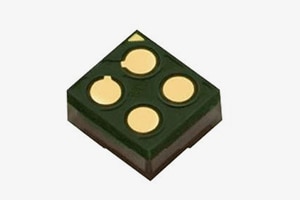 AFBR-S4N22P014M
AFBR-S4N22P014M 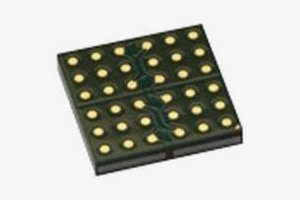 AFBR-S4N44P044M
AFBR-S4N44P044M 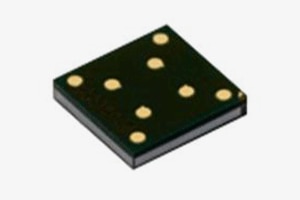 AFBR-S4N66P014M
AFBR-S4N66P014M 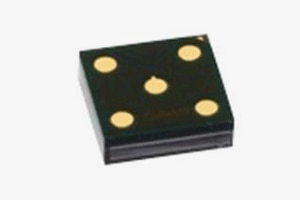 AFBR-S4N44P014M
AFBR-S4N44P014M 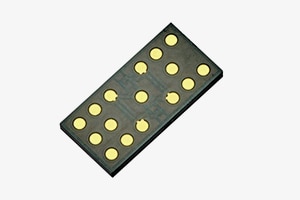 AFBR-S4N66P024M
AFBR-S4N66P024M 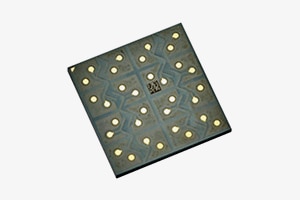 AFBR-S4N44P164M
AFBR-S4N44P164M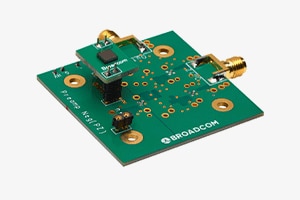 AFBR-S4E001
AFBR-S4E001  AFBR-S4P11P012R
AFBR-S4P11P012R
-

shabaz
-
Cancel
-
Vote Up
0
Vote Down
-
-
Sign in to reply
-
More
-
Cancel
Comment-

shabaz
-
Cancel
-
Vote Up
0
Vote Down
-
-
Sign in to reply
-
More
-
Cancel
Children